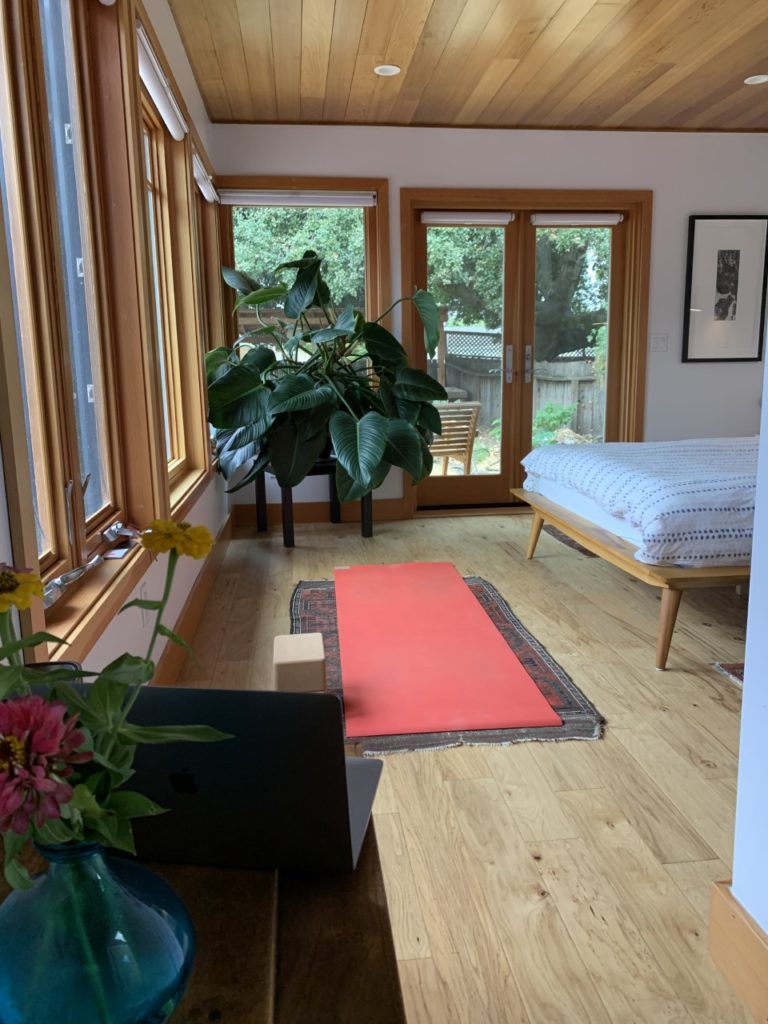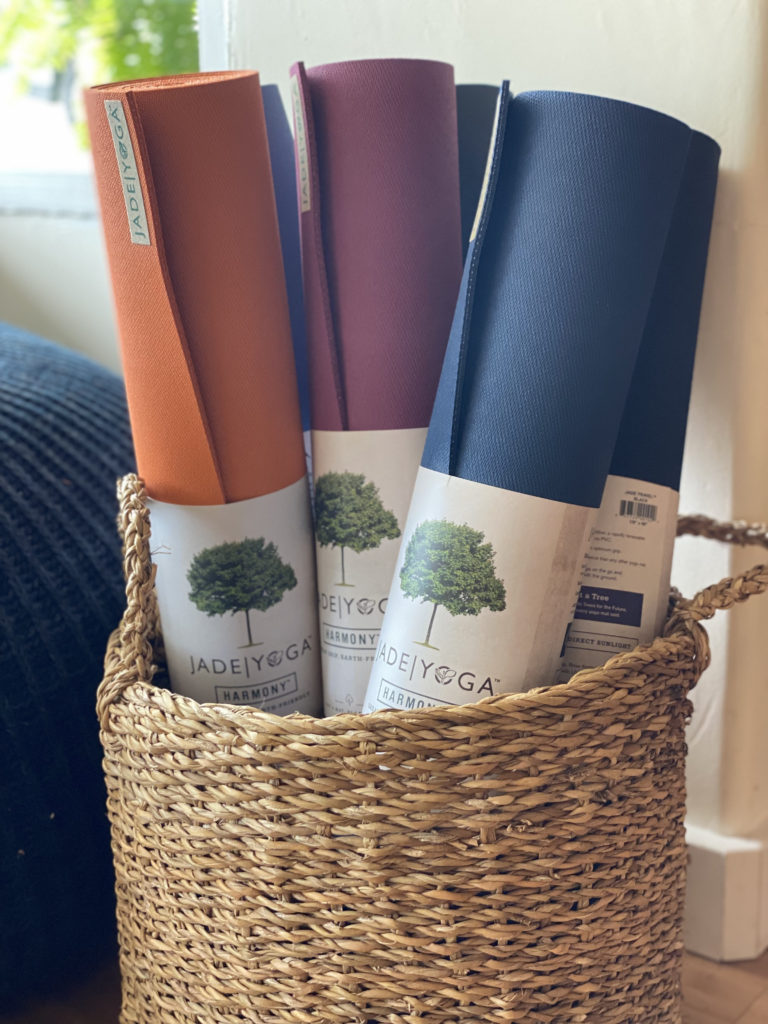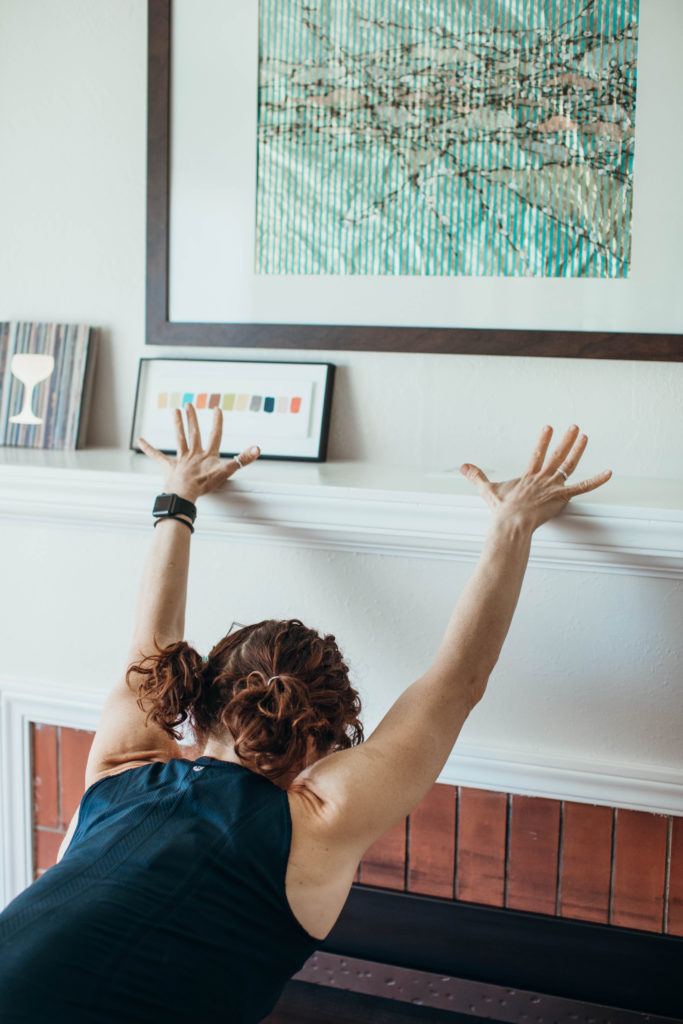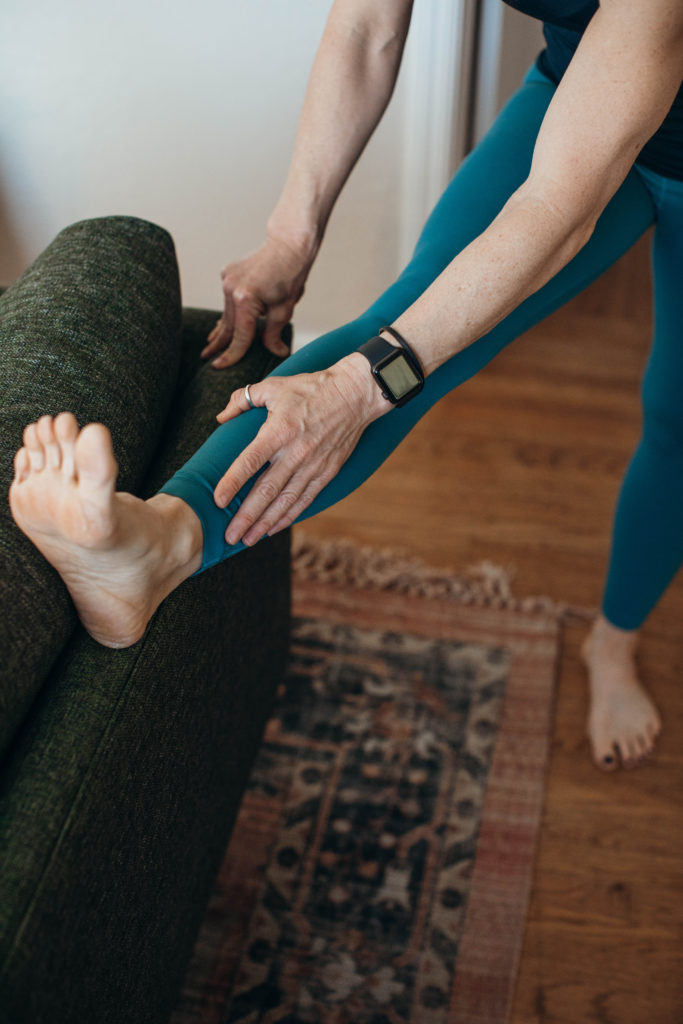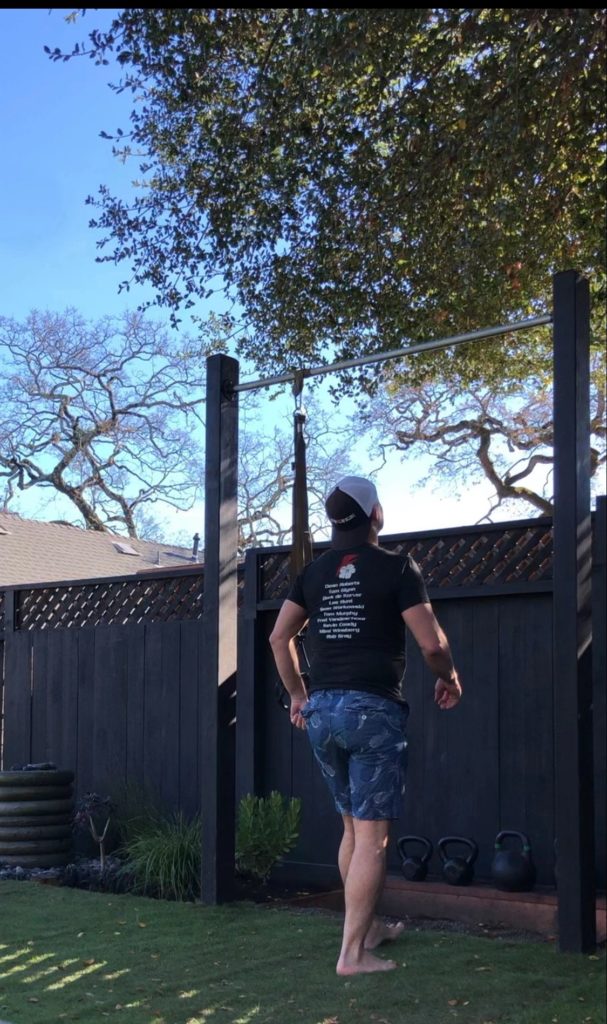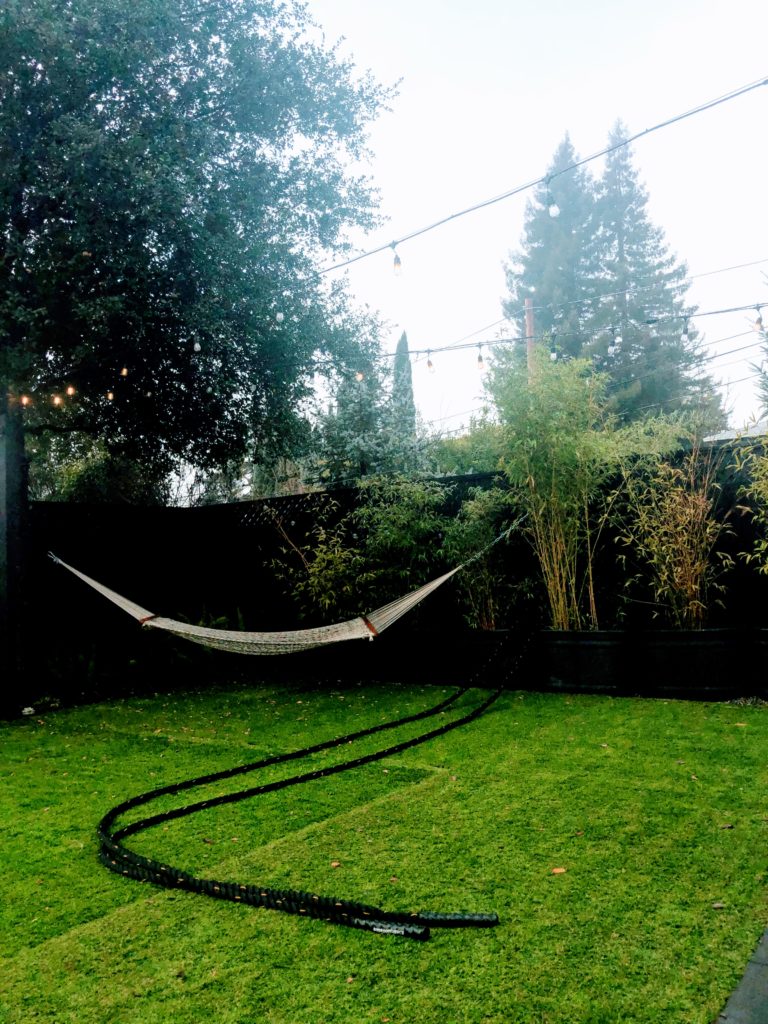During the pandemic, as gyms closed, many turned to virtual workout sessions to stay physically and mentally healthy. Although recreation facilities have now reopened, the at-home workout has become a mainstay in personal fitness. Working out at home comes with a range of benefits. It’s convenient (you don’t have to go anywhere as many local gyms and yoga studios bring exercise to your home via online classes), it’s cheaper than a gym membership (some health care providers offer access to free or reduced-cost online video classes) and it’s flexible (you can decide when and how you would like to work out). Being able to exercise at home is also helpful when the air is too smoky to venture outdoors.
If you’d like to start an at-home exercise routine, or take your YouTube workout sessions to the next level, we asked two Sonoma fitness experts to share ideas on how to create a workout space at home, whether you have access to an entire room or just a few square feet.
Make it appealing
Kevin Coady, coach at TriForce Triathlon Team in Healdsburg, says consistency is the most important tactic when it comes to improving fitness: gentler workouts done regularly are more effective than intense workouts that aren’t maintained. A well planned at-home workout space can help create and maintain that routine.
As a change-up from swimming, biking and running workouts, Coady uses a variety of tools that help inspire him to get regular exercise. He has installed a pull-up bar in his backyard and keeps a row of kettlebells underneath. He also uses TRX suspension trainers that offer a variety of exercise opportunities. By keeping these items neatly in view, he is encouraged to exercise more frequently. Cool down areas are important, too: The artificial turf in his yard is a nice place to rest after a workout.
Keep it simple
It’s easy to get overwhelmed by all the different workout videos and tools that are available to us now. Coady suggests keeping it simple in order to stay focused. He uses a weighted battle rope to get his heart rate up in just a few minutes. He also recommends having items like jump ropes or resistance bands on hand for quick and easy workouts. Keeping things simple allows people to access exercise daily, regardless of reduced focus or fatigue.
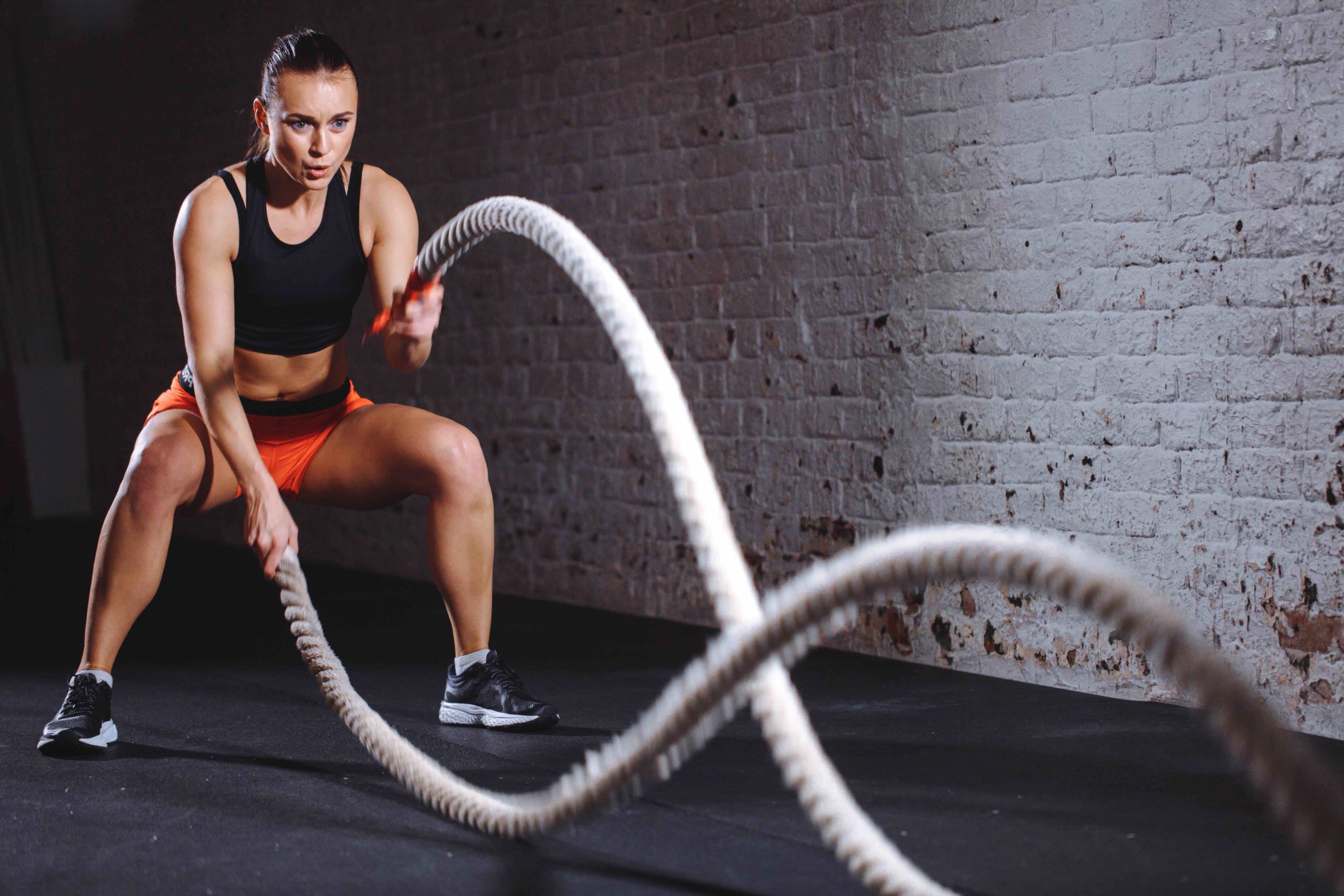
Create a “pain cave for the apocalypse”
A “pain cave,” or indoor bike setup, is an at-home workout space many triathletes use as they prepare for the challenge ahead. Coady has created his own “pain cave for the apocalypse” that allows workouts through gym closures and injuries (Coady jokingly adds that not even zombies should be an impediment to his apocalyptic exercise routine). When a hip injury prevented him from running and biking for two weeks, and pools were closed due to the pandemic, he added a a Vasa swimming machine to his pain cave. Not working out for two weeks was not an option, he says.
Coady also uses this space to coach clients remotely using Zwift, an app that gives cyclists access to a virtual cycling world with multiple courses, group rides and even races to help keep them motivated.
Set up your pain cave or workout space “so you don’t have to be the best version of yourself” in order to get a workout in, advises Coady. Again, remember to keep things simple: you want to create a workout space that “your regular old mediocre self can use.”
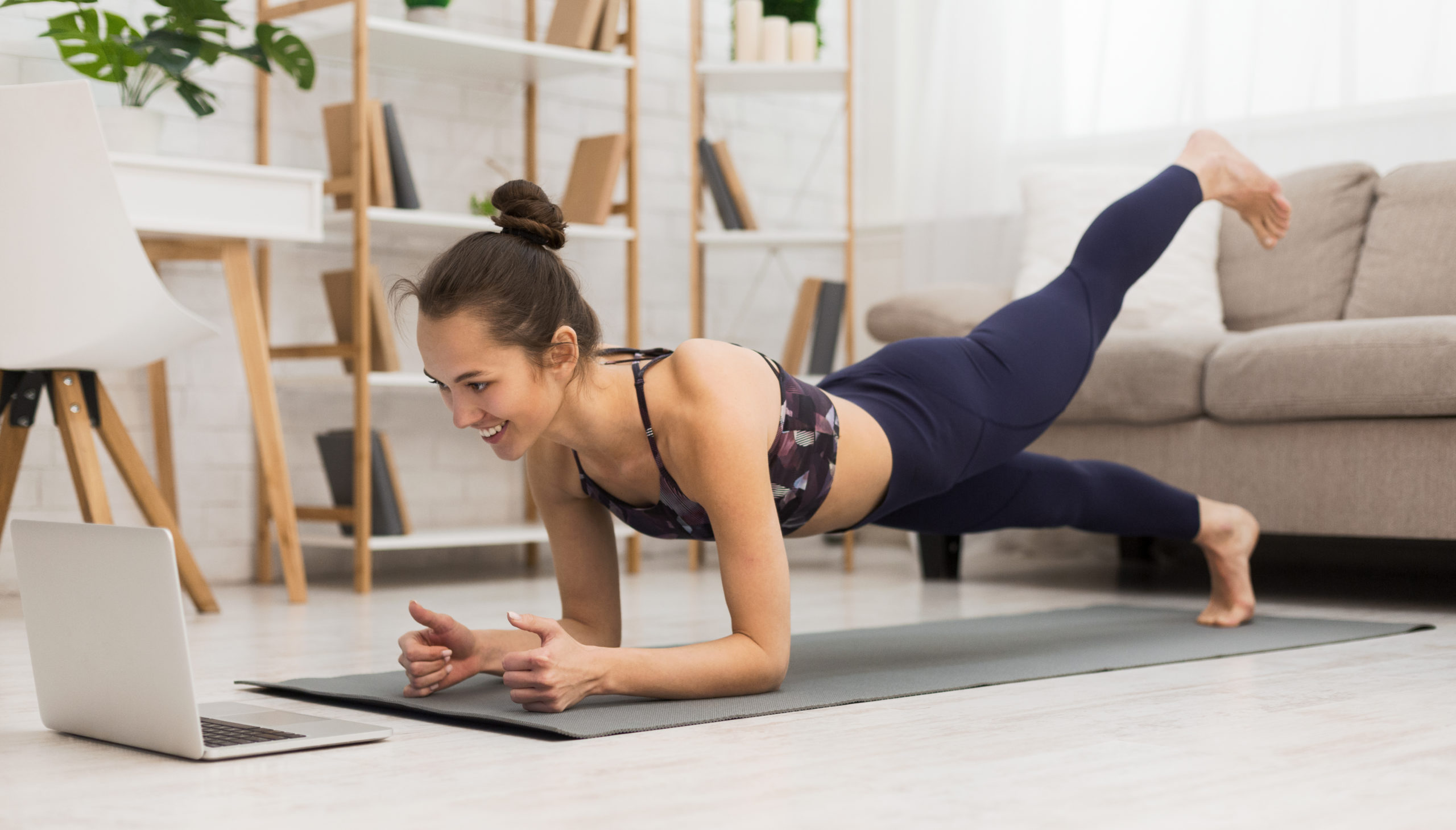
Yoga at home
Anna McLawhorn, an instructor at Three Dog Yoga in Santa Rosa, agrees that consistency is key when it comes to workout success. The yoga studio where she works has been leading yoga classes on Zoom for the last year and a half. After briefly reopening for in-person classes, they returned to Zoom after the indoor mask mandate was issued in August amid a surge in cases and the Delta variant.
While McLawhorn misses the social element of practicing yoga together with other people, in person, she notes that online yoga classes have allowed many people to maintain greater consistency in their practice, due to the convenience of being able to workout at home. And McLawhorn and her fellow teachers at Three Dog Yoga have still managed to create a sense of community on screen, she says. With cameras turned on, each participant offers a window into their space that gives the class a sense of “we’re all in this together,” she adds.
Here, McLawhorn shares Three Dog Yoga’s tips for creating a tranquil yoga space.
Have a dedicated spot
In order to make it to the mat more often, keep everything you need for your practice in one space. If you can’t keep your yoga items — mats, blankets and blocks — in the same space where you practice, keep them close by and in view to remind you “it’s ready to be transformed when you are,” advises the Santa Rosa yoga studio.
Work with what you have
A wall can be used for stretching, a chair can be used for twisting and a sofa is good for propping up legs. Your practice can take place at a corner in a hallway or even in a galley kitchen. Hard floors are the best surfaces to practice on but low-pile carpets and rugs can work, too, as long you can keep your balance on those surfaces.
Create serenity
Look for a spot with plenty of natural light or a source of soothing artificial light. Add a plant. Hang art that creates a sense of peace, joy or harmony. Choose a mat in a color you love.
Keep it clutter free
A clean space will free you of distractions and Three Dog Yoga suggests tidying the area where you practice as part of your yoga ritual. “Consider the front and back view from your mat. You’ll spend a fair amount of time looking back in downward-facing dog!”
Keep it near an outlet
If you are taking classes on a computer, phone or tablet, make sure to set up near an electrical outlet so you can keep your devices charged and working for the duration of the practice.
Let the space serve the ritual
Practice in a space where you can close the door or otherwise separate from distractions. Let those you live with know when you’re planning to do a yoga session. Use a candle, meditation book or essential oils to create a soothing ritual to help you settle in for practice. “Once you get in the habit of going to your yoga space, it can feel a lot like you’re stepping into the serenity of a studio,” says the studio.












